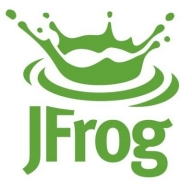

Red Hat Quay and JFrog Container Registry are container registries. JFrog Container Registry leads with its feature set and integration capabilities.
Features: Red Hat Quay offers automated image cleanup, built-in vulnerability scanning, and efficient image management. JFrog Container Registry provides seamless integration with the JFrog ecosystem, support for hybrid development environments, and advanced container management features.
Ease of Deployment and Customer Service: Red Hat Quay offers a straightforward deployment process with a focus on customer support. JFrog Container Registry provides flexible deployment options as part of a wider platform, which may require a more sophisticated setup.
Pricing and ROI: Red Hat Quay has a competitive pricing structure suitable for smaller teams or projects. JFrog Container Registry may have higher initial costs but offers significant returns for businesses leveraging its advanced ecosystem.
| Product | Market Share (%) |
|---|---|
| JFrog Container Registry | 29.7% |
| Red Hat Quay | 8.0% |
| Other | 62.3% |


The JFrog Container Registry is a repository manager, which supports Docker and Helm registries and Generic repositories, allowing you to build, deploy and manage your container images while providing powerful features with fine-grained permission control behind a sleek and easy-to-use UI.
Red Hat Quay is a private container registry that stores, builds, and deploys container images. It analyzes your images for security vulnerabilities, identifying potential issues that can help you mitigate security risks.
We monitor all Container Registry reviews to prevent fraudulent reviews and keep review quality high. We do not post reviews by company employees or direct competitors. We validate each review for authenticity via cross-reference with LinkedIn, and personal follow-up with the reviewer when necessary.